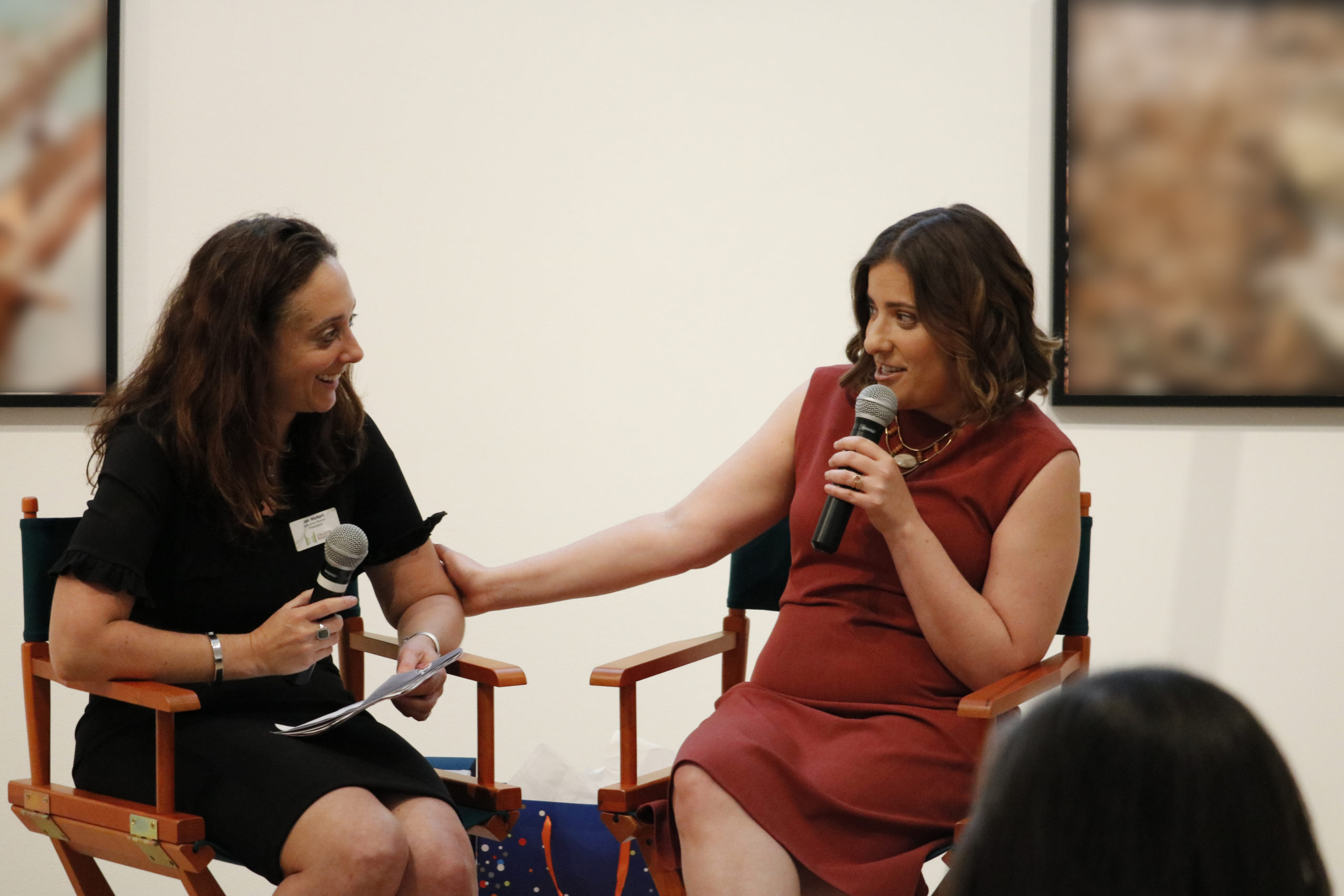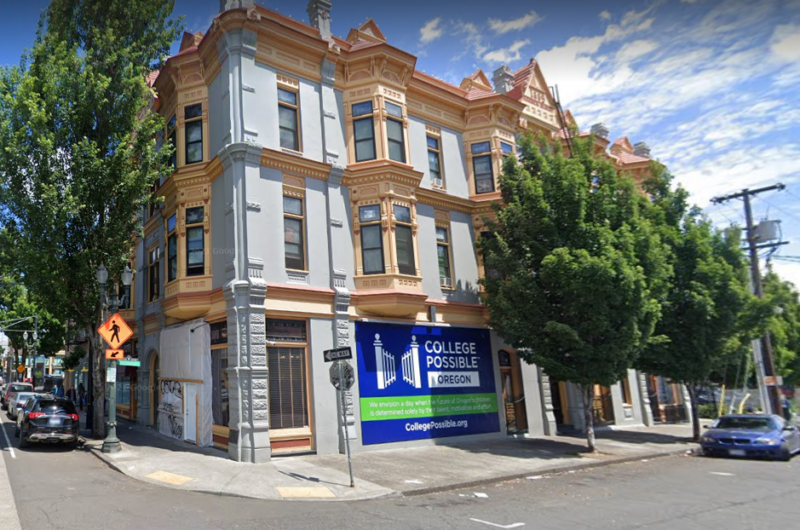5 Things We Learned from Dr. Sara Goldrick-Rab
During College Possible Philadelphia’s Champions for College Completion event on May 16, Executive Director Jen Weikert sat down with event honoree Dr. Sara Goldrick-Rab to discuss her work and her perspective on some important topics affecting higher education. Here are five things we learned from their conversation:
 1. Is College Still Worth It?
1. Is College Still Worth It?
With rising tuition costs, growing student debt and the Varsity Blues Scandal , many people are reexamining the college admissions process and questioning if college is still worth it. While Dr. Goldrick-Rab understands many hardworking families feel that the system is not helping their students succeed, she points out that more jobs than ever require some kind of post-secondary degree. “There are one in five goods jobs still available to people who didn’t go to college,” she says. “But that’s only 20 percent, and if you’re betting the odds for your own kid, you’re going to bet on the 80 percent [of jobs available to those with a post-secondary degree].”
So, is college worth it? In Dr. Goldrick-Rab’s opinion, yes.
2. The New Economics of College
Before the year 2000, Dr. Goldrick-Rab says students pursuing a post-secondary degree dealt with the old economics of college – completing financial aid applications, taking a standardized test, getting into college and graduating with a degree. Under these old economics, there were safety nets in place to help struggling students persist through graduation; however, since 2000 the system has dramatically changed.
In her 2016 book, Paying the Price: College Costs, Financial Aid, and the Betrayal of the American Dream, Dr. Goldrick-Rab says that today’s students are faced with the new economics of college. In this new economic era, deep cuts in funding to colleges and universities have led to skyrocketing tuition prices while the Pell Grant has stayed stagnant, not increasing at a rate attuned to the economic realities of today’s diverse student body.
Commenting on this dichotomy, Dr. Goldrick-Rab stated, “Rent goes up, even when the Pell Grant doesn’t get bigger. The price of food goes up, even when the Pell Grant doesn’t get bigger. So does the price of healthcare.” As students struggle to cover basic living expenses, their financial challenges are often overlooked because of misconceptions about students’ finances.
“People say ‘Oh students, they’re just spending all this money on cell phones and clothes and shoes. Have you ever taught a student who hasn’t had the opportunity to clean their clothes lately? I know deans who are putting laundry facilities in their offices because the students don’t have money to do laundry and you can’t keep them [students] in the classroom in that shape.”
The new economics of college have resulted in a system that students cannot thrive in. While there were safety nets in place prior to 2000, many students no longer have the financial and systematic supports that once existed and matriculation has become that much more challenging for students from low-income backgrounds.
 3. The Power of $500 Dollars – Under-Resourced Institutions
3. The Power of $500 Dollars – Under-Resourced Institutions
For more than half of American families, pulling together $500 to cover an emergency expense is nearly impossible, and for college students the same financial restraints exist but at an even higher frequency. “[Do] you know how often an emergency expense of $500 comes up in college? Pretty much every term,” said Dr. Goldrick-Rab. “Textbooks, meal plans and other school supplies can overwhelm students who are already facing financial burdens. When families are unable to provide assistance, students are left with few options. “
The safety net is in tatters,” describes Dr. Goldrick-Rab. “It’s not easy to get on food stamps as a college student anymore because the rules were revised to make it harder.” When students turn to their institutions for help, many of them are unable to provide support or even keep up with requests for assistance. “We at Temple – we don’t have it,” she says. “We’ve been cut by the state so hard. Our endowment is so small. We don’t have it. And that is a whole new storm. Under-resourced students, from under-resourced families, entering under-resourced institutions.”
4. Food Insecurity and Homelessness are Affecting Students at an Alarming Rate
In April 2019, Dr. Goldrick-Rab and her team at the Hope Center for College, Community, and Justice released the College and University Basic Needs Insecurity: A National #RealCollege Survey Report. This report details the impact of food insecurity and housing insecurity/homelessness among college students across the country and the results have been alarming. As Dr. Goldrick-Rab explains “… Across space, time and type of college, we find that as many as 1 in 2 students have dealt with food insecurity or housing insecurity, sometimes both, in the last year.” As startling as these numbers are, she fears that the extent of the problem is still being underestimated.
“Realize that we’re just assessing that using an electronic survey that doesn’t pay incentives. Why would a student who’s sleeping in their car take our survey? It doesn’t offer any help. It doesn’t pay. We’re probably underestimating the problem,” she stated. “Why should somebody be punished for trying to get a college degree?”
5. Why does College Possible’s Work Matter?
Reflecting on College Possible’s work in the greater Philadelphia region, Dr. Goldrick-Rab said, “[College Possible’s work] matters because the biggest thing that students want is someone to talk to.” Across higher learning institutions, faculty members and advisors maintain large portfolios of student advisees and at some schools, the ratio can be one advisor for 600 students.
“Advisors around the country are starting to put clocks on their desks and set a limit so when a student walks in, they only get 10 minutes,” she says. “You try to build trust with someone who has been through something [traumatic] in 10 minutes.” Relationship building is at the heart of College Possible’s work and College Possible coaches are often the listening ear that many advisors do not have the time to be.
“… The relationship [students in the program] build over the course of several years will allow them, when they’re sophomores in college, to say to that coach … ‘my grades aren’t so good and I’m going to lose my financial aid.’ [College Possible] is filling in where the system broke. It broke. It’s in cracks. It’s in tatters.”
Learn more about Dr. Sara Goldrick-Rab’s work and the work of the Hope Center for College, Community and Justice
By Ian Reitz



